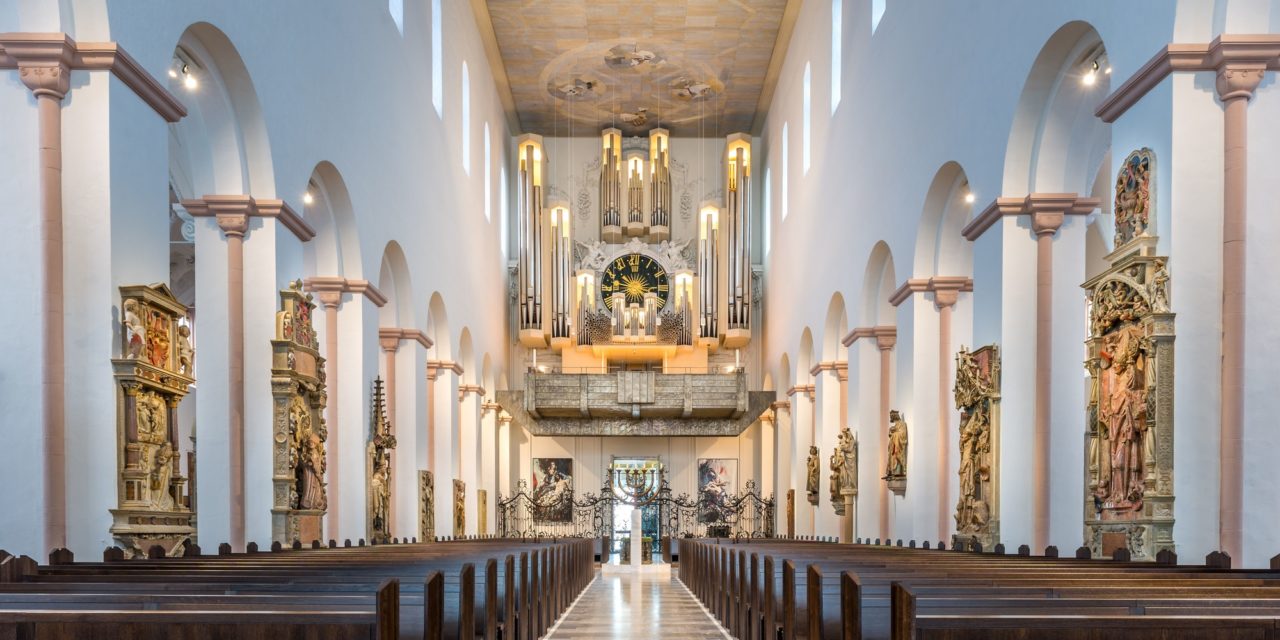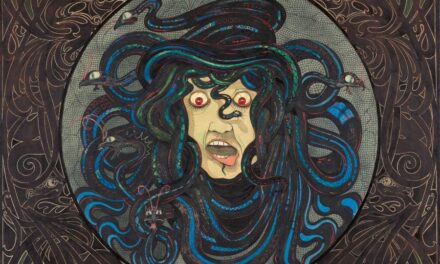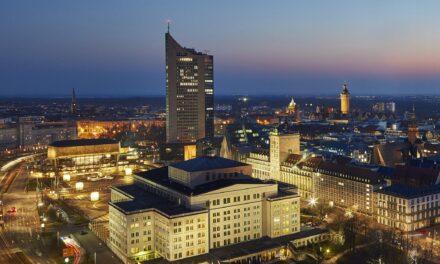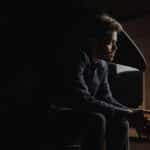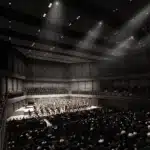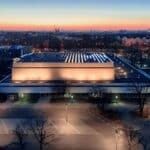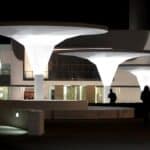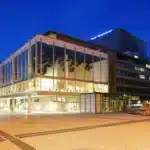Due to its size, Würzburg Cathedral is one of the most impressive monuments of the Salian period. After the first two cathedral buildings (built around 787 and 855) were completely or partially destroyed by fire, following the accidental death of Bishop Bruno in 1045, his successor in the office of bishop, Adalbero, completed the building in 1075. The late Gothic redesign of the side aisles took place around the year 1500 with a Baroque stucco finish in 1701 by Pietro Magno.
After the collapse of large parts of the cathedral in the winter of 1946 as a result of the bombing of Würzburg on March 16, 1945, it was rebuilt until 1967. The result was a successful, albeit controversial, combination of largely Romanesque, modern and Baroque elements, and the neo-Romanesque west façade with rose window, tripartite gallery and clock opening was faced with a simple pumice stone wall during reconstruction. It was uncovered again during renovation work in 2006 and the pre-war state was largely completed by the end of 2006. The choir was redesigned in 1987 by Hubert Elsässer.
The Schönborn Chapel is attached to the transept. It is an important creation by Balthasar Neumann. The Schönborn Chapel served as a burial place for the prince-bishops of the House of Schönborn. The frescoes are by the court painter Rudolf Byß. To the south there is a Gothic cloister and a sepulture with modern stained glass windows by G. Meistermann.
The Cathedral Music of Würzburg
Over 500 people at Würzburg Cathedral are committed to proclaiming the Christian faith through music, investing a great deal of time and motivation, the majority of whom are members of one of the Cathedral Music choirs: the Cathedral Choir, the Cathedral Boys' Choir, the Girls' Choir or the Chamber Choir, which was founded in 2003. The four choirs are directed by cathedral conductor Christian Schmid and cathedral cantor Alexander Rüth. The focus of the choir's musical activities is the liturgy, in particular the Sunday 10 a.m. service. In addition, the series of Würzburg Cathedral Concerts, for which soloists and choirs from outside Würzburg are regularly invited, is very popular with audiences and critics alike.
Organ music forms the second central area of musical events at Würzburg Cathedral. Cathedral organist Stefan Schmidt accompanies the cathedral liturgy and can be heard at organ concerts.
Würzburg Cathedral Music is rounded off by the Musikgarten and early music education at the Cathedral Singing School as well as the Cathedral Music Association, which has set itself the task of promoting all aspects of cathedral music.
The cathedral treasury
For a long time, it was believed that the treasures of the Würzburg Cathedral treasury had been lost for good as a result of the Second World War. However, an extensive search and the restoration of supposed losses have brought many works of art from over ten centuries back to life.
On 170 square meters, 182 objects are on display, from tiny particles of relics to massive tombstones. The focus of the presentation is on the relics, to which a large area is dedicated right at the entrance.
The fact that bishop's vestments are also subject to fashion can be seen in the mitres on display, among other things. The example from around 1725 to 1750 shows classic floral motifs, while Bishop Josef Stangl's mitre from the early 1970s is clearly reminiscent of the imaginative patterns of the time.

